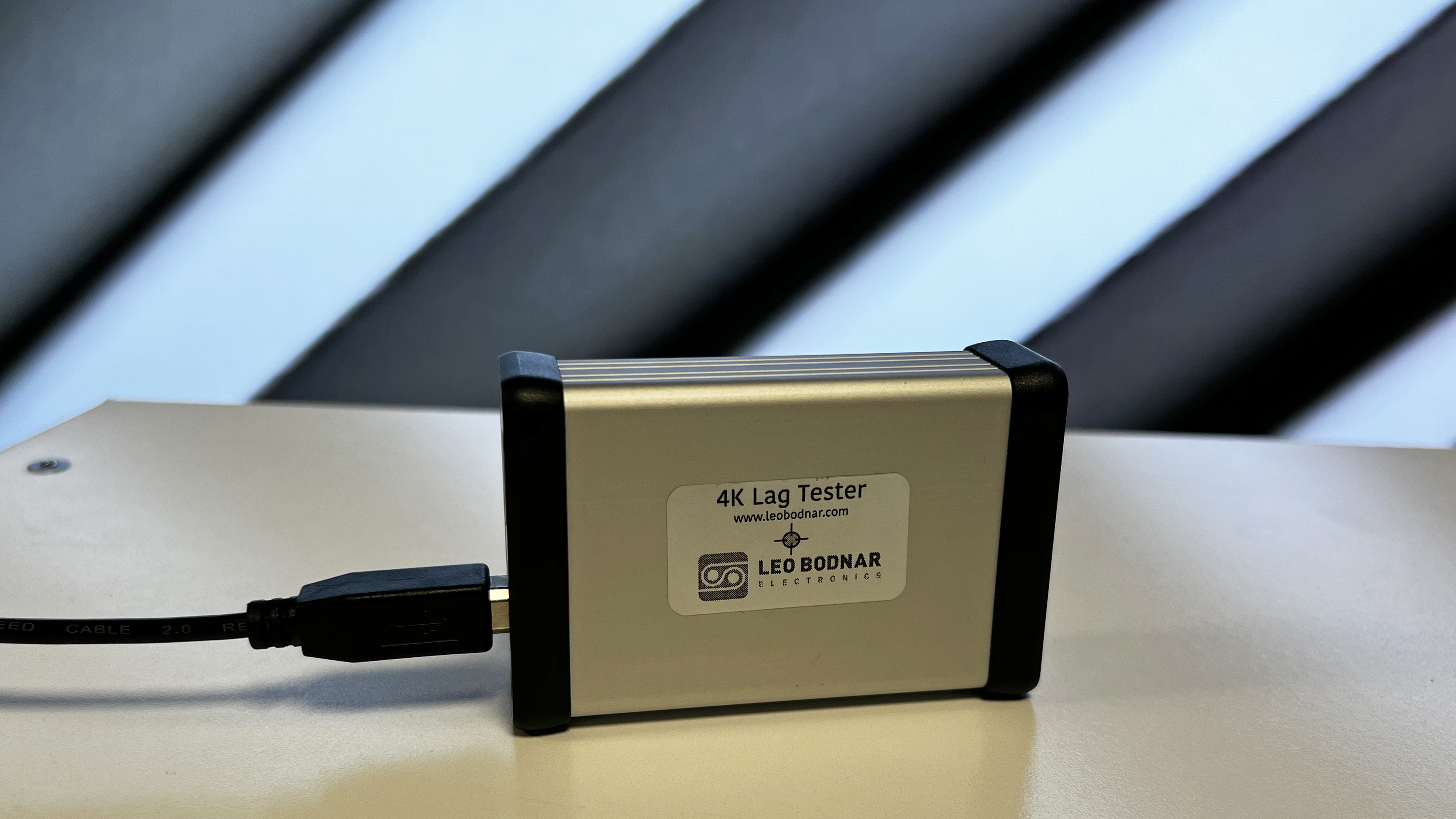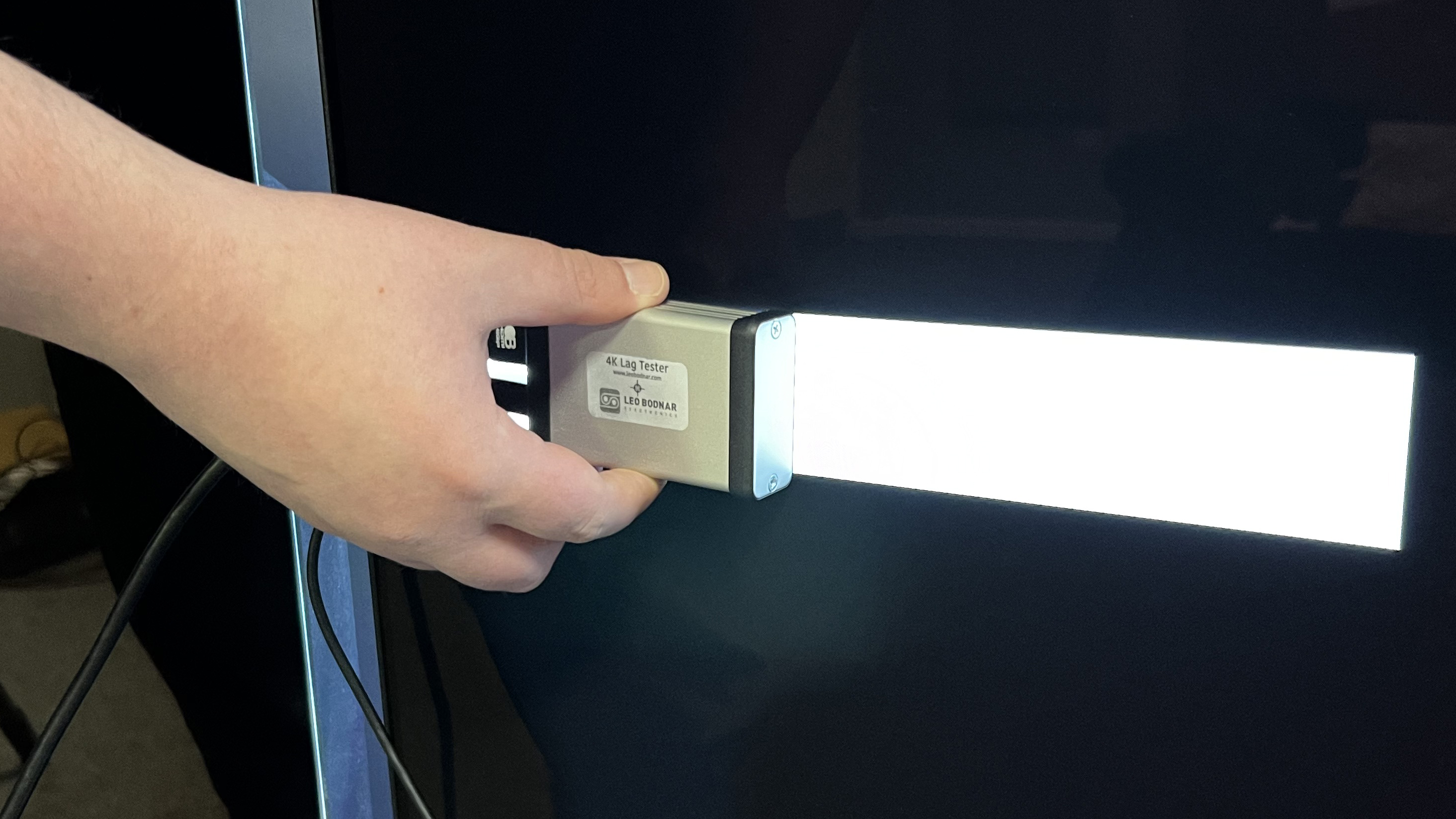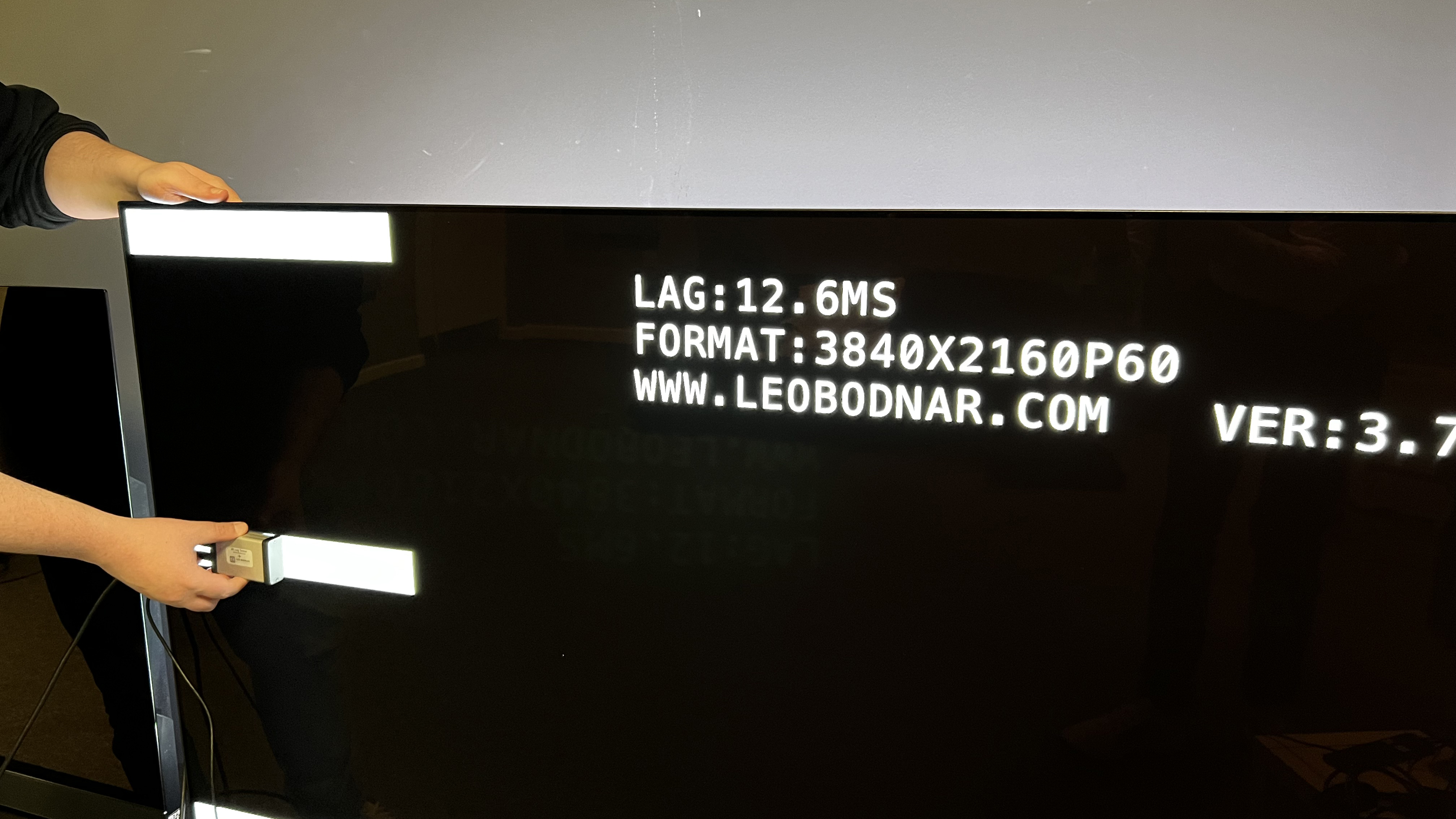How we test TV input lag at TechRadar

When we test the best TVs, we look for key features designed to maximize performance with game consoles such as the PS5 and Xbox Series X and also for PC gaming. These features include high refresh rates (120Hz/144Hz), Variable Refresh Rate (VRR), and Auto Low Latency Mode (ALLM), among others, and how these are handled informs our ratings for the best gaming TVs.
One of the most important gaming performance criteria we test for is latency (also referred to as input lag). Defined in the simplest terms, latency is the time delay between when an image is sent from a source and when a TV, monitor, or projector displays it.
Great TVs for gaming have low input lag for competitive gaming in racing games and first-person shooters (FPS), for example, where the smallest level of latency can drastically affect the outcome. We’re talking milliseconds of delay, but some of today’s video games support 120fps output, which means there’s only 8ms between frames, so a tiny delay makes a difference. The higher the latency, the longer the delay between when a player inputs a command from a controller and when the result is shown on-screen.
TVs use a lot of digital processing (such as noise reduction, motion processing and interpolation, and upscaling ) and this can drastically affect input lag times. Many TVs nowadays feature a ‘game mode’, and when active, it will turn off some of these digital processes and adjust to the best possible settings for gaming.
Below is a breakdown of what equipment we use to test latency on TVs, how the testing process works, and what latency times you can expect on some of the best 120Hz TVs and gaming TVs.

We use the Leo Bodnar 4K HDMI Input Lag Tester to measure latency. This device can measure input lag at a variety of resolutions and refresh rates, but the most common ones used for our testing are 4K at 60Hz and 1080p at 120Hz.
The Leo Bodnar tester measures input lag by connecting to a 4K HDMI port on the TV and sending a built-in test pattern that appears on the TV screen and is measured using a sensor on the device itself. The measured input lag results (in milliseconds) also appear on screen and are then recorded.
Sign up for breaking news, reviews, opinion, top tech deals, and more.
Before connecting the Leo Bodnar tester, we put the TV into its game mode, which provides the lowest possible latency and represents what people will be using when gaming on it. We then connect it to an HDMI 2.1 port that supports 4K 120Hz if one is available, or a 4K 60Hz port.
At this time, three flashing bars appear on the TV’s screen. We hold the Leo Bodnar tester up to the middle bar because this is the equivalent of taking an average reading of all three bars. We then keep it in place for a few more seconds to account for any changes. We also take multiple readings to avoid any outlier results.

If there is more than one type of game mode on the TV, we’ll record both results and differentiate between them. Some TVs from manufacturers, such as LG and Philips, include an ‘enhanced’ game setting which will further reduce input lag. The best example of this is on LG TVs such as the LG C3 and LG G3, which feature LG’s Game Optimizer menu with a ‘Boost’ setting. Without Boost mode, LG TVs average around 12ms of input lag. With Boost mode on, it is reduced to roughly 9ms.
Input lag results vary across TVs, but most we test are under 20ms, which is still a decent result. But knowing the difference between a TV like the Sony X90L, which yielded a result of 18.9ms, and the Samsung QN85C, which yielded a result of 9.8ms, can be extremely important to competitive gamers when choosing a TV.
According to Intel, professional gamers look for an input lag below 15ms. For these professional gamers (or those looking for the same performance as professionals do), a TV with an input lag of over 15ms wouldn’t be suitable, making it all the more important that we test TVs for latency.

Al Griffin has been writing about and reviewing A/V tech since the days LaserDiscs roamed the earth, and was previously the editor of Sound & Vision magazine.
When not reviewing the latest and greatest gear or watching movies at home, he can usually be found out and about on a bike.
- James DavidsonTV Hardware Staff Writer, Home Entertainment